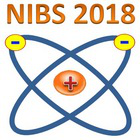Conveners
10th session
- Ursel Fantz (Max-Planck-Institut fuer Plasmaphysik)
Dr
Daniele Aprile
(Consorzio RFX)
05/09/2018, 15:30
H– and D– sources for fusion, accelerators and other applications
Oral
During 2016, a joint experimental campaign was carried out by QST and Consorzio RFX on the Negative Ion Test Stand (NITS) at the QST Naka Fusion Institute, Japan, in order to validate some design solutions adopted in MITICA which is the full-scale prototype of the ITER NBI, presently under construction at Consorzio RFX, Padova, Italy.
The main purpose of the campaign was to test a novel...
Dr
Taneli Kalvas
(University of Jyvaskyla, Department of Physics)
05/09/2018, 16:00
Fundamental processes and modelling
Oral
Today's new developments, such as CERNs Linac4 injector, pose strong demands on the extraction and LEBT systems. Designing such systems is challenging. First of all the H- ion beam formation is difficult to model: the physics taking place at the extraction sheath is rich and approximations have to be made. The extraction system is strongly affected by the need for co-extracted electron...
Mr
Anton Kolmogorov
(Budker Institute of Nuclear Physics)
05/09/2018, 16:30
H– and D– sources for fusion, accelerators and other applications
Oral
The polarized beam for RHIC spin physics experimental program is produced in the Optically Pumped Polarized H– Ion Source (OPPIS). The present RHIC OPPIS produces 0.5–1.0 mA current in 300 μs pulse duration. The polarized H– ion beam of 35 keV beam energy out of the source is accelerated to 200 MeV in a linear accelerator for strip injection to Booster. The H– ion pulse is captured in a single...

